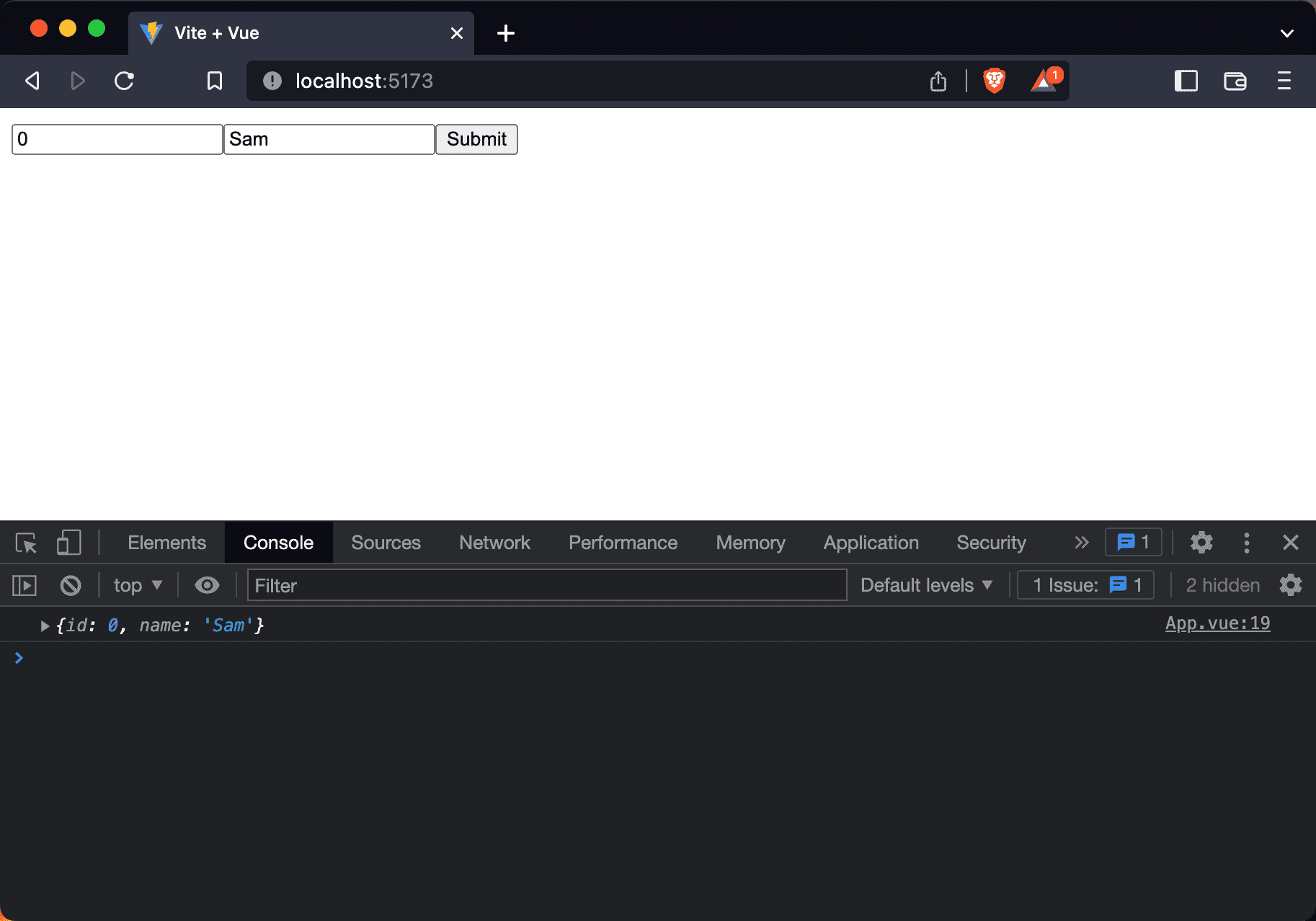When using fetch() for REST POST, we can easily prepare Body Object on Vue.
Version
Vue 3.2
ref()

The body Object is shown.
<template>
<input v-model='id'>
<input v-model='name'>
<button @click='onClick'>Submit</button>
</template>
<script setup>
import { ref } from 'vue'
let id = ref(0)
let name = ref('Sam')
let onClick = () => {
let body = {
id: id.value,
name: name.value
}
console.log(body)
}
</script>
Line 2
<input v-model='id'>
<input v-model='name'>
<button @click='onClick'>Submit</button>
v-model:two-way data binding the input value to the state@click:fireonClick()onclickevent
Line 10
let id = ref(0)
let name = ref('Sam')
- Use
ref()to defineidandnamereactive reference
Line 13
let onClick = () => {
let body = {
id: id.value,
name: name.value
}
console.log(body)
}
- Prepare
bodyObject. Sinceidandnameare Reactive References, we have to use.valueto get real value
reactive()
<template>
<input v-model='state.id'>
<input v-model='state.name'>
<button @click='onClick'>Submit</button>
</template>
<script setup>
import { reactive } from 'vue'
let state = reactive({
id: 0,
name: 'Sam',
})
let onClick = () => {
let body = state
console.log(body)
}
</script>
Line 2
<input v-model='state.id'>
<input v-model='state.name'>
<button @click='onClick'>Submit</button>
v-model:two-way data binding the input value to the state,studentis a Reactive Object@click:fireonClick()onclickevent
Line 10
let state = reactive({
id: 0,
name: 'Sam',
})
- Use
reactive()to definestudentReactive Object.idandnamestates are just properties of the Object
Line 15
let onClick = () => {
let body = state
console.log(body)
}
studentReactive Object is thebodyObject, and we don’t have to prepare thebodyObject again
Conclusion
- If we only have a few states, both
ref()andreactive()work. But if we have too many states,reactive()is more concise